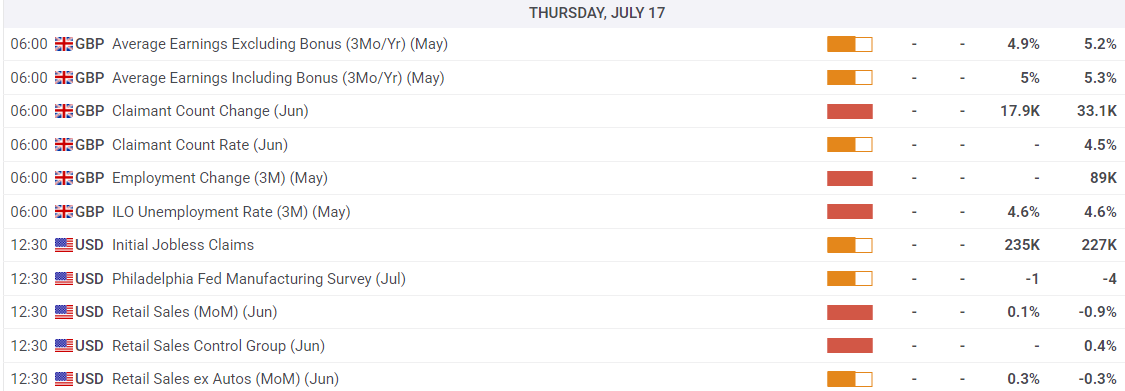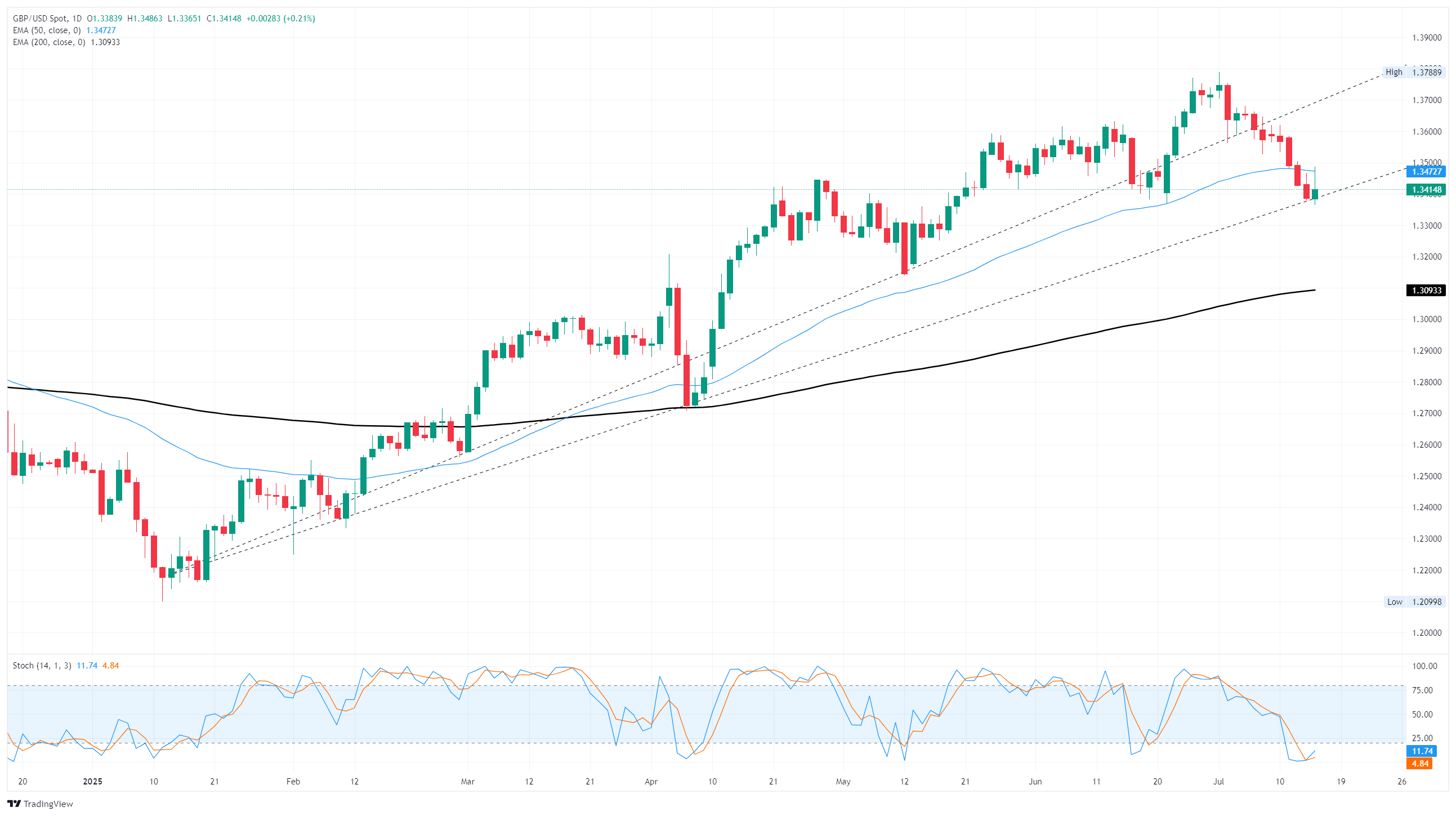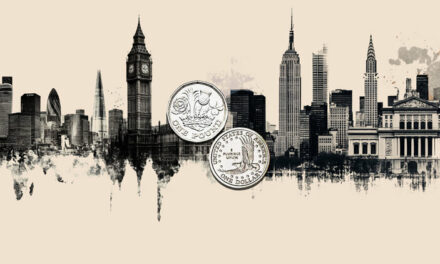- GBP/USD caught a volatile step higher on Wednesday, snapping an eight-day losing streak.
- Renewed political angst over Trump targeting Fed Chair Powell has waylaid the Greenback.
- US PPI inflation eased in June, cooling off inflation fears.
GBP/USD saw renewed gains on Wednesday, snapping an eight-session losing streak as Cable bidders pump the brakes on an extended backslide. The Greenback took a fresh hit from souring broad-market sentiment after President Donald Trump ramped up his attacks on Federal Reserve (Fed) Chair Jerome Powell, and investors may be getting worried about the Fed’s political independence.
UK Consumer Price Index (CPI) inflation in June accelerated across the board on Wednesday. Inflation risks make it difficult for the Bank of England (BoE) to make any further rate cuts, bolstering the Pound Sterling further.
President Trump pivoted to a half-hearted statement that he’s “not planning on doing anything” about Fed Chair Powell at the moment, however brandishing a termination letter written specifically for the Fed head in front of Congress on Wednesday sent a clear signal that Trump is looking for an avenue to terminate Powell’s position as head of the Fed.
Coming up on Thursday, Cable traders will be facing down a fresh batch of UK labour data, followed by US Retail Sales figures. Key US consumer sentiment survey indicators on Friday will round out the trading week.

GBP/USD price forecast
Wednesday’s meager rebound has cut off a one-sided near-term decline after Cable tumbled away from multi-year highs in early July. GBP/USD looks set to confirm a technical bounce from the 1.3400 handle, but only if bidding pressure is able to maintain momentum.
GBP/USD daily chart

Pound Sterling FAQs
The Pound Sterling (GBP) is the oldest currency in the world (886 AD) and the official currency of the United Kingdom. It is the fourth most traded unit for foreign exchange (FX) in the world, accounting for 12% of all transactions, averaging $630 billion a day, according to 2022 data.
Its key trading pairs are GBP/USD, also known as ‘Cable’, which accounts for 11% of FX, GBP/JPY, or the ‘Dragon’ as it is known by traders (3%), and EUR/GBP (2%). The Pound Sterling is issued by the Bank of England (BoE).
The single most important factor influencing the value of the Pound Sterling is monetary policy decided by the Bank of England. The BoE bases its decisions on whether it has achieved its primary goal of “price stability” – a steady inflation rate of around 2%. Its primary tool for achieving this is the adjustment of interest rates.
When inflation is too high, the BoE will try to rein it in by raising interest rates, making it more expensive for people and businesses to access credit. This is generally positive for GBP, as higher interest rates make the UK a more attractive place for global investors to park their money.
When inflation falls too low it is a sign economic growth is slowing. In this scenario, the BoE will consider lowering interest rates to cheapen credit so businesses will borrow more to invest in growth-generating projects.
Data releases gauge the health of the economy and can impact the value of the Pound Sterling. Indicators such as GDP, Manufacturing and Services PMIs, and employment can all influence the direction of the GBP.
A strong economy is good for Sterling. Not only does it attract more foreign investment but it may encourage the BoE to put up interest rates, which will directly strengthen GBP. Otherwise, if economic data is weak, the Pound Sterling is likely to fall.
Another significant data release for the Pound Sterling is the Trade Balance. This indicator measures the difference between what a country earns from its exports and what it spends on imports over a given period.
If a country produces highly sought-after exports, its currency will benefit purely from the extra demand created from foreign buyers seeking to purchase these goods. Therefore, a positive net Trade Balance strengthens a currency and vice versa for a negative balance.







